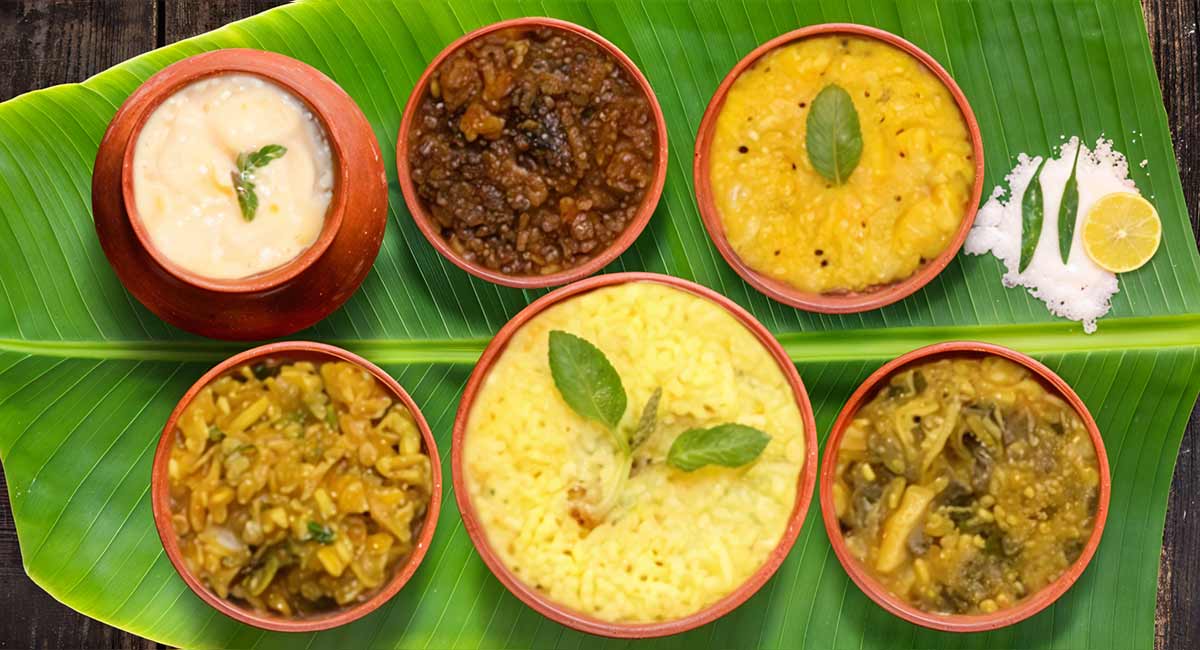Odia Temple Food: Why It Avoids Onion and Garlic
When we think about Odisha, we often picture its rich culture, beautiful temples, and mouth-watering food. One of the most special aspects of Odia cuisine is its temple food, especially the offerings made to Lord Jagannath in Puri’s Jagannath Temple, known as Mahaprasad. Interestingly, the temple food in Odisha, especially that of the Jagannath Temple, strictly avoids using onion and garlic. But why is that?
Let’s examine the reasons behind this sacred tradition and understand why Odia temple food is spiritually and culturally unique.
The Importance of Temple Food in Odisha
Temples in Odisha, especially in Puri, are not just places of worship—they are centers of community, tradition, and daily ritual. One of the biggest attractions of the Jagannath Temple is its Mahaprasad, a divine food offering made with love and devotion. Traditional Suaras prepare it in the temple’s ancient kitchen (Rosha Ghara).
Devotees prepare food for Lord Jagannath and later distribute it among themselves. They don’t consider it just food—it holds sacredness, purity, and spiritual blessings. To maintain its purity, strict rules are followed, including avoiding onion and garlic.
Why Avoid Onion and Garlic?
Avoiding onion and garlic in temple food is not unique to Odisha — it’s a common practice in many Hindu temples across India. The main reasons fall under three broad categories:
- Spiritual Reasons (Sattvic Diet)
In Hindu philosophy, especially in Ayurveda and yogic practices, foods are classified into three categories:
- Sattvic (pure and spiritual)
- Rajasic (stimulating and spicy)
- Tamasic (heavy and dulling)
Onion and garlic are considered tamasic and rajasic in nature. That means people believe these foods stimulate passion, agitation, and laziness—qualities unsuitable for a calm and devotional mind. Since temple food aims to be sattvic, which supports meditation and spiritual clarity, devotees avoid onion and garlic.
The logic is simple: food affects our body and mind. Only food that promotes peace, purity, and positivity is acceptable for divine worship and offerings to deities.
- Cultural and Scriptural Traditions
Odisha follows strong cultural traditions based on Vaishnavism, a branch of Hinduism that worships Lord Vishnu and his avatars, like Lord Jagannath. Vaishnavas believe in living a simple, clean, and disciplined life. The Chaitanya Sampradaya, a sect deeply linked with Jagannath culture, encourages a sattvic lifestyle, naturally excluding onion and garlic.
According to many scriptures, such as the Manusmriti and Bhagavad Gita, food offered to deities should be pure, clean, and non-stimulating. Since devotees consider onion and garlic impure or unfit for religious offerings, temple cooks never use them in temple kitchens.
- Health and Hygiene in Community Offerings
In ancient times, temple cooks prepared food in large quantities to feed thousands of devotees. They ensure hygiene and maintain uniformity in taste and quality. Maintaining hygiene and uniformity in taste and quality is essential. Onion and garlic spoil quickly and produce a strong odor when stored or cooked in bulk, which many consider unpleasant or unsuitable for sacred food.
Additionally, avoiding perishable and pungent ingredients like onion and garlic ensures that the food stays fresh longer, especially in a temple setting where food is prepared in the morning and offered throughout the day.
How Is Temple Food Cooked Without Onion and Garlic?
You might wonder if food can still be delicious without onion and garlic. The answer is a big yes, especially in Odia cuisine!
Temple food in Odisha is cooked using simple ingredients like:
- Cumin (jeera)
- Mustard seeds
- Ginger
- Green chilies
- Asafoetida (hing)
- Curry leaves
- Fresh coriander
- Ghee (clarified butter)
These ingredients add flavor, aroma, and depth to the dishes. One famous example is Dalma, a hearty mix of lentils and vegetables, flavored with ginger, bay leaves, and cumin—absolutely no onion or garlic, yet so flavorful and wholesome.
Another key ingredient is Panch Phoran, a five-spice mix of fennel, mustard, cumin, fenugreek, and nigella seeds, commonly used in Odia cooking to give temple dishes a unique and aromatic touch.
Some Famous Odia Temple Dishes Without Onion and Garlic
- Mahaprasad from Jagannath Temple – Includes dishes like Khichdi (Khechudi), Dalma, Saga Bhaja, Besara, Khatta, and Kheer (Payas).
- Khichdi Prasad – A straightforward rice-lentil dish prepared with ginger, cumin, and ghee is called khichdi prasad.
- Chhena Poda – Lord Jagannath’s favorite is chhena poda, a delicious dish prepared with cottage cheese that is baked to perfection!
- Besara – Besara is a mixed vegetable meal prepared without garlic or onions and with mustard paste and turmeric.
A Legacy of Simplicity and Spirituality
What makes Odia temple food stand out is not just the taste but the emotion and devotion behind its preparation. The absence of onion and garlic does not remove flavor—it adds spiritual value. The simplicity of the food teaches us an important life lesson: Less is more. Without fancy ingredients, the temple meals still nourish the body and soul. The practice also reminds us to be mindful of what we eat and how it affects our thoughts and behavior.
Final Thoughts
Odia temple food is a wonderful blend of tradition, culture, health, and spirituality. The absence of onion and garlic is a conscious choice rooted in ancient wisdom and religious faith. It helps maintain purity, promotes a calm mind, and allows devotees to connect with the divine through food. So, next time you enjoy a simple plate of Khichdi or Dalma at a temple or in your home, remember—it’s not just food. It’s prasadam, filled with blessings, purity, and peace.


